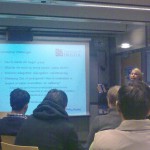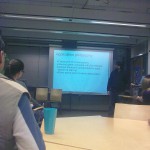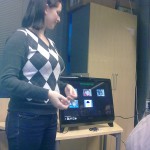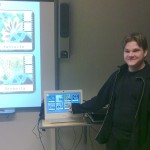Three main points create me conflict and/or impotence:
1) Digital technology is a powerful and fragile tool.
One of the reasons why I see it powerful is because it can connect ideas, reflections, experiences, without physical boundaries. One reason why I think it is fragile is because without infrastructure (besides accessibility and know how) is useless.
A pencil or even a crayon is less fragile than a mobile phone. For example it can survive better natural disasters than a whole wireless or electricity network require for a mobile phone to work. Things to think about….
2) We see only what we want to see, and what media allows us to see.
In the transition from Sept to October 2009, millions of lives have been changed due to natural disasters just in Asia alone. My records only have the following events:
Those are only few tragedies, no idea how many are present. And yes I know natural disasters are always present, I shouldn’t get that surprise someone could say.
But what makes me wonder today is the press (at least the one that I usually read) hardly cover these events. Those sources of information are focusing in other matters as politics and fraud. Hmmmm…. if I remember well in December 2004, with the Tsunami where citizens of several western countries were victims, the same press I read had bigger coverage about this. I do not want to speculate, but…
… from what we are “allow” to see, we only see what we can see and want to see.
3) We have information about climate change through digital and not digital formats. But how many of this information indicates how to change our behaviors to diminish this.
Wondering who generates most of the CO2? who are the ones who demand more raw material to produce “x”? Who are the ones who flight? who are the ones who waste heater and air conditioner in their houses? Who consumes most of the meat produced overseas? Who are the ones who use driers? who uses a car only for one person? how many products wrap with layers of plastic do we buy?, who produces most of the e-Waste? ….
And when I find articles as “Debate Follows Bills to Remove Clotheslines Bans” I do not know if I should laugh or cry.
======
*** Summarizing…
Each one of our actions are like a grain of sand. One grain might look insignificant, but all together form wonderful beaches. The same happened with disasters.
Even that I am a privilege person and have access to quality of information about how to be a better human for my planet, and I want to help and do things right. My trace of CO2 surely supports the actual disasters in Asia, and other countries….. I declare myself guilty 🙁
No related to environment, but related with lack of understanding to take proper action. This year I have 8 papers rejected in a row. I appreciate the referees’ feedback as they had stressed that focus is my main problem. I knew it, but I can’t fix it yet. Should I declare myself guilty too?
*** All these makes me think….
It is not enough to get the information on how to improve something. It needs to be adapted to the reality of the listener, to support as much as possible the understanding of such information. Learners are smart, and if it is close to their ZPD they will do fine and get into proper action.
But how can I change/improve “X” if the information that I seemed to understand is not linked to my reality?, less to the ZPD. The clearer this information is adapted to my reality, the possibility increases to get close to my ZPD, and then move in some direction instead to follow an inertia.
It is not matter that others do my job or live my life, or lecture me about something. I want to understand how to improve and do things. I would imagine this happens with all the topics, and with all the persons.
*** Do not give up….
If I succeed with myself one day, I am optimistic that maybe I could support others to success by themselves afterward.
My research, baptized as Hypercontextualized Game, seeks to create awareness in-site about specific subject matter. It is paradoxical, right? I want to be an expert of my weakest side.
======
Then, my conflict makes me feel helpless when I know with my mind and my heart that something must be done. I kind of figure it out a proposal to take action to solve something, but I can’t succeed to make my message clear neither match my actions with my intentions.
My conflict makes me feel helpless when I see how humans are working constantly to make of our planet a mess. I do not understand humans and I do not want to do the same, but at the end I am one of them doing the same 🙁

Image source: Rachmat Lianda






